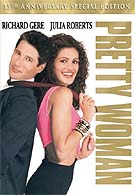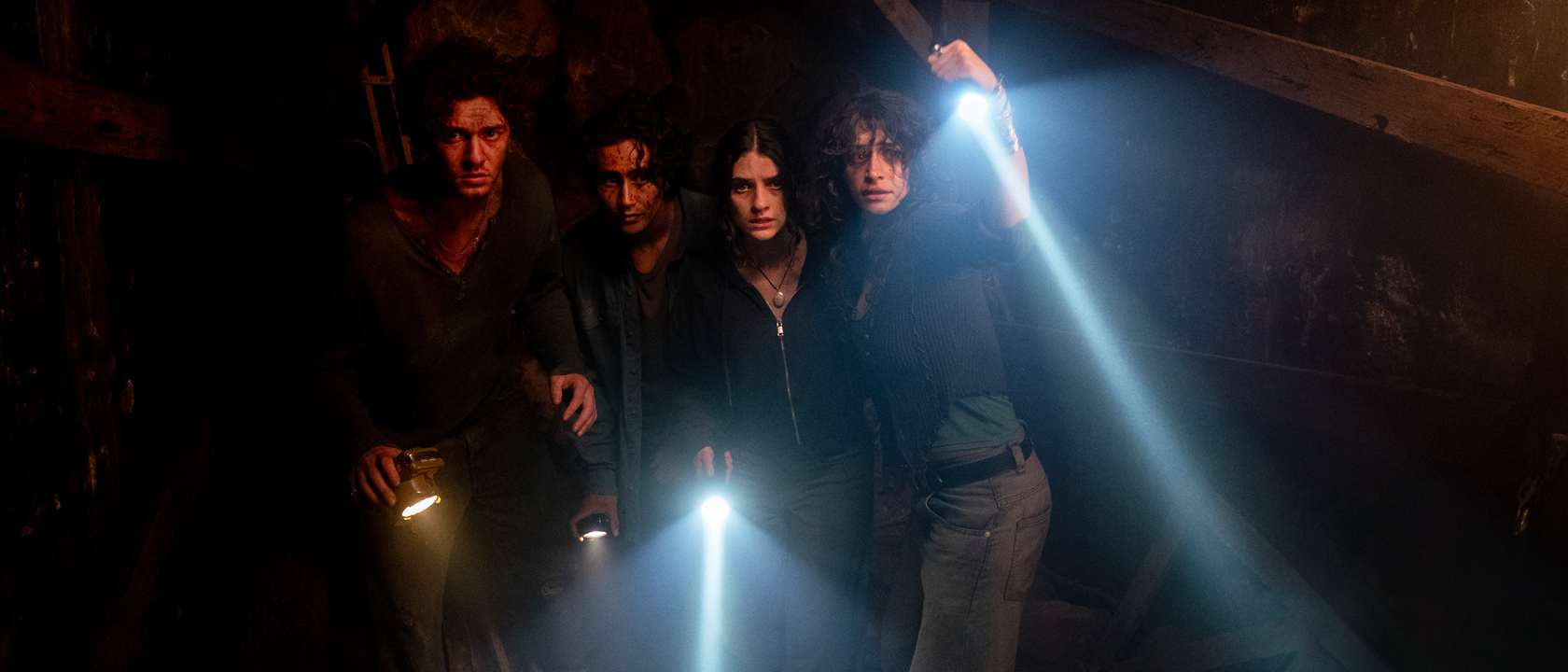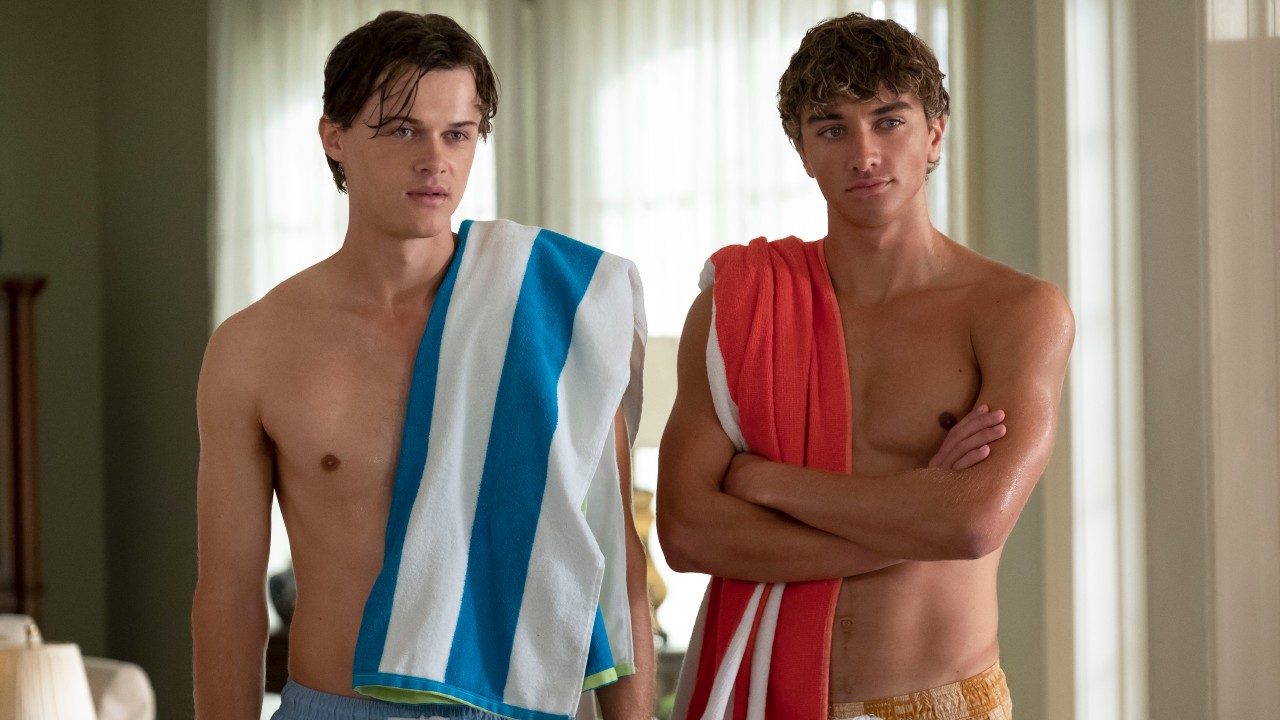“Welcome to Hollywood” the man says, “what’s your dream?” It’s the premise behind Garry Marshall’s prostitute-to-princess love story – finding what your heart is dreaming for. He’s a classy but hard nosed business man, she’s a street smart hooker whose heart isn’t really into it. Edward and Vivian come from the extreme opposites ends of the spectrum financially, socially, and emotionally. They only have one thing in common: neither excels at what brought them together. She’s not very good at being a hooker and he’s not very good at picking one up. Nevertheless, they come together anyway, discovering a mutual struggle to give each other what they hadn’t been able to find on their own: love.
Pretty Woman has been around for fifteen years now and is something of a classic with quite a significant history. The movie is perhaps best known as the one that made Julia Roberts famous. She had done some films before, but her turn as a street-girl turned modern fairy-tale princess pushed her to the front of the line, earning her an Oscar nomination for best leading actress. Other notable actors also got a boost. It was Hank Azaria’s first film role ever, was Jason Alexander’s last movie before making it big with “Seinfeld” and was the movie that truly launched the career of Larry Miller.
The film has a certain magic to it, something that shines most when Edward is opening Vivian’s eyes to a wonderful new reality. It has nothing to do with money or the glamorous life of the corporate rich. The world he shows her is one where a woman is treated as she is meant to be: like a lady. Despite the nature of their basically professional relationship, the movie isn’t about sex. It’s about love. Sensuality and sexiness play a major role but it hardly descends to the level of gratuitousness.
While a timeless story, the setting and costumes are anything but. The movie positively screams late eighties in a major way. Cell phones, decade dance club music, and freakin’ giant shoulder pads are all over the place. Still, there’s something classic about the places where director Garry Marshall chooses to set his scenes as he surrounds his fairytale characters with modern day castles. He also gives his lead character a chivalrous grace while capitalizing on his leading lady’s beauty, making them the perfectly flawed modern knight in shining armor and damsel in distress.
Richard Gere and Julia Roberts have a quirky sort of chemistry; his suave, solemn style counterbalancing her brash, vivaciousness. Never mind he’s old enough to be her father, it’s a simple if not odd match and its at the very heart of what makes Pretty Woman work. More than that, they seem completely comfortable with each other, in sync through each scene, playing off one another in an almost too perfect way.
Exceptionally memorable supporting cast members lend the movie its better grace notes. A host of well written, well played characters really set the tone and keep the movie from taking itself too seriously. Worth noting is Hector Elizondo, who is practically a fixture in any Garry Marshall movie. He’s a consummate character actor and he produces much of the movie’s comic relief while mastering the more dramatic moments with his signature class.
At its heart the movie is a story of finding the potential in each other through love. It’s a lofty sort of sentiment for a rags to riches story, but it works in surprising ways. The characters end on a note that is happy but it isn’t your traditional happily ever after. Hardly a family film, it’s still a classic fairy tale with a sexy sort of classiness, and one that will no doubt still be popular in another fifteen years. Anniversary releases are becoming something of a tradition for Pretty Woman, what with this being its fifteenth anniversary and third release on DVD. To bother pointing out that it’s fifteen years old is rather unnecessary. The movie’s patently late-eighties soundtrack and football sized cell phones are more than enough to date the pop-fairytale flick. It may be fair to call this release a double dip, but it’s not quite fair since Garry Marshal offers a brand new commentary in which he discusses the film in a current day context, something unavailable at the time of the last release five years ago. A little shameless, maybe, but at least Touchstone isn’t doing the same with all of its movies.
I love Garry Marshall. I know, as a reviewer I shouldn’t say things like that, but I do. How many directors quote Brecht and Chekov (the playwright, not the Starfleet officer). I love his acting, I love his directing, and as a general rule I love his movies (with a few exceptions…I may never be able to forgive him for exposing the world to Rosie O’Donnell in bondage leather). I also love to hear him talk and he gives a great commentary, putting nice 2005 observations on a 1990 movie. He also gives a rather Disney-ish looking tour around the shooting locations from the movie. It’s a quick and fun little feature if you like looking at the where’s and why’s of the film’s many famous sets.
There's a very odd bonus feature to include: home video footage from the wrap party of Pretty Woman. The wrap party, the equivalent of a post-production cast and crew party, was held at a bowling alley and included an impromptu performance with Richard Gere on the piano, director Garry Marshall on the drums, and Julia Roberts on vocals. Gere is an amazing pianist (which he deftly proves during the movie) and Garry is a surprisingly decent drummer. Julia…well, she looks pretty up there on stage, doesn’t she?
Another strange feature is the inclusion of a blooper reel. It fits though, especially given that one of the movie’s most famous moments, the hand snap in the jewelry case, was itself a blooper, a joke played on Julia. It worked so well Garry left it in the film. The other bloopers are funny enough to be worth watching. It’s always fun to see an actress stuff her mouth full of really cold sorbet and try to hold the moment and you can never get enough of Hector Elizondo saying the word ‘shlahonga’.
If the movie’s soundtrack and costuming don’t drag you kicking and screaming back to the late eighties you’ll find a Natalie Cole video of “Wild Women Do” that will do the trick. I laughed the entire way through it, not because it’s funny, but because it abuses every decade music video and costume cliché out there, right down to those out of control shoulder pads and camera effects.
The digital transfer of the movie is brilliant and beautiful. No doubt it’s the same one from five years ago, but like they say, if it ain’t broke, don’t fix it. The theatrical trailer included is another story, looking something like it was recorded with a camera phone. The quality looks and feels old, reminiscent of what we used to see on the screen in the eighties, and makes you appreciate just how amazing a job was done with the movie’s transfer.
The only disappointing feature is a pitiful excuse of a making-of-featurette. It’s less than five minutes long and is really nothing more than the trailer with some extra voice over and a couple of actor/director interview sound bytes. I was really hoping for some kind of reunion round table discussion with members of the cast, but no such luck. Maybe on the twentieth anniversary?
If you’re a major Marshall, Roberts or Gere fan you may want to add this one to your collection, or if you’re interested in Pretty Woman for the first time this is a fine version to own. If you already have a copy, don’t feel gypped. Just rent this version to catch the new bonus material and then go back to enjoying your copy. The important part, the classic movie, hasn’t changed in fifteen years.
Why One The Summer I Turned Pretty Fan Thinks A Parallel Between The Latest Poster And An Audrey Hepburn Movie Spoils The End
I Talked To The Wedding Banquet Director About My Favorite Scene, And Turns Out Youn Yuh-Jung Actually Had A Key Note That Made It Better
Georgie & Mandy's First Marriage Just Revealed A Messy Twist In Connor's Relationship, And I Can See This Getting Complicated











